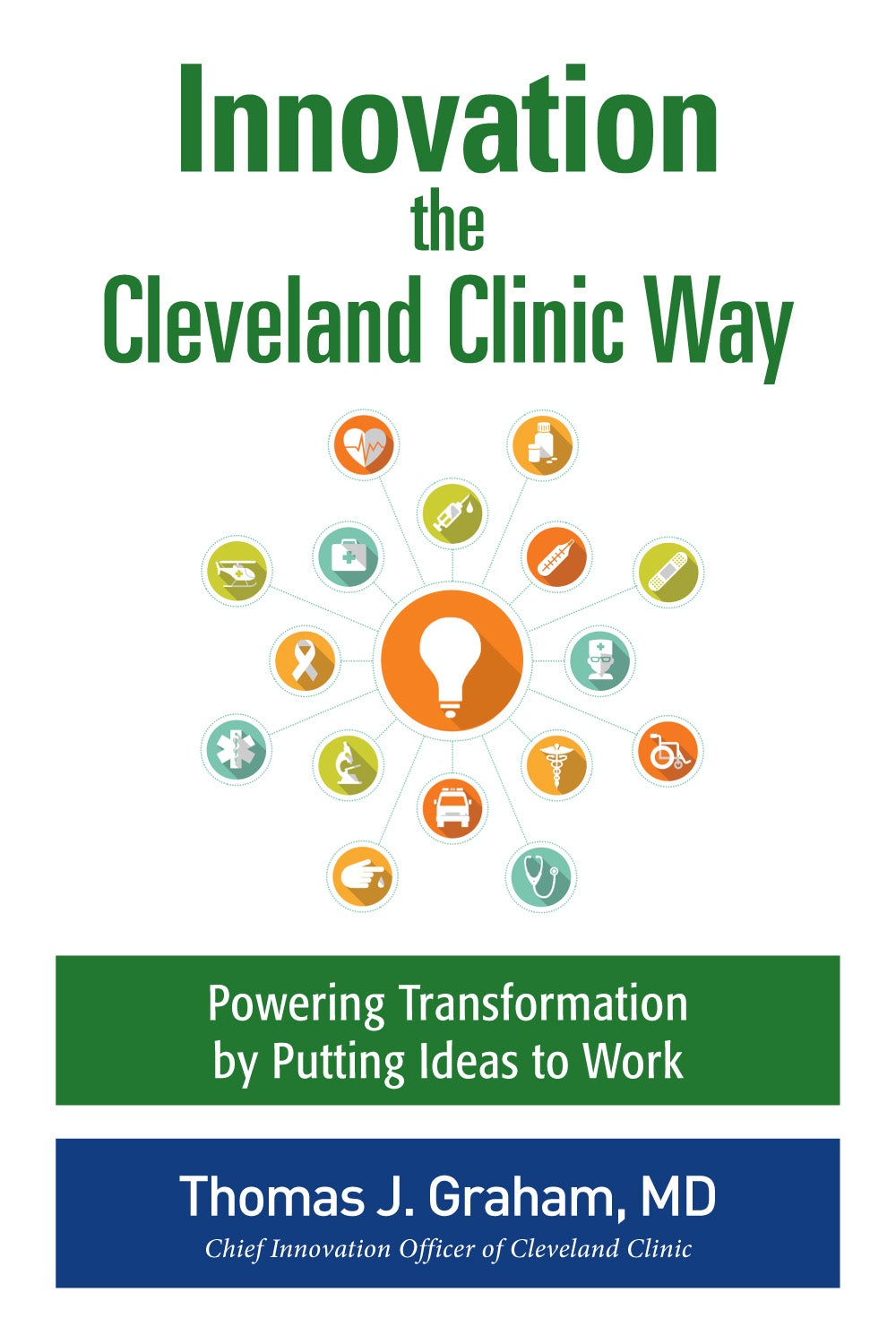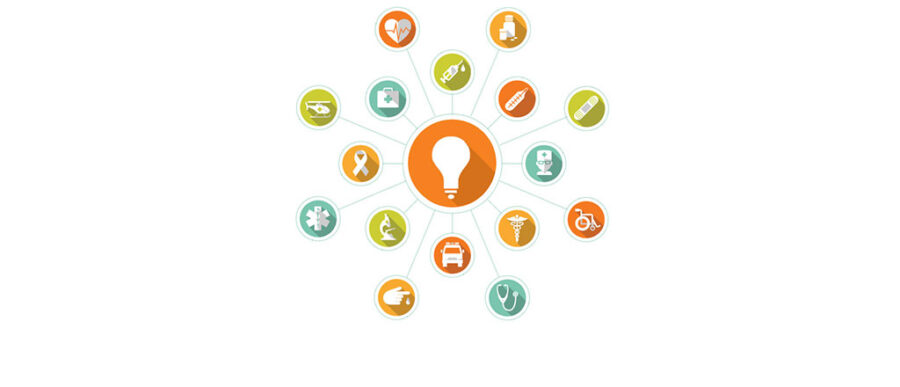 A new book about the Cleveland Clinic distills what it has learned from pioneering several medical innovations, including the first hospital-based kidney dialysis unit in the 1950s, the first coronary bypass surgery in the 1960s, the first successful larynx transplant in the 1990s, and the first near-total face transplant in 2008, among others. Innovation the Cleveland Clinic Way, by Thomas J. Graham, MD, shares its approach to innovation and offers suggestions to any organization that wants to take a more disciplined approach to innovation.
A new book about the Cleveland Clinic distills what it has learned from pioneering several medical innovations, including the first hospital-based kidney dialysis unit in the 1950s, the first coronary bypass surgery in the 1960s, the first successful larynx transplant in the 1990s, and the first near-total face transplant in 2008, among others. Innovation the Cleveland Clinic Way, by Thomas J. Graham, MD, shares its approach to innovation and offers suggestions to any organization that wants to take a more disciplined approach to innovation.
In the following excerpt, Graham lays out the Cleveland Clinic’s 10 innovation imperatives.
Over the years, a set of tenets has evolved to guide our innovation efforts. I have distilled them into these 10 commandments:
- Innovation will occur when the most creative and qualified people are positioned for exposure to the most fertile material to inspire creative thought. This seems like a logical, almost basic concept, but it should not be taken for granted. Innovation requires the basic ingredients for the chemical reactions that produce creative outcomes. The basic substrates are need, opportunity and ability. The catalyst may be the infrastructure that enables the development of ideas into meaningful inventions, but the pipeline is stocked by the environment that optimizes the interaction between material and makers.
- Positioning individuals and the organization to innovate requires active strategic and structural actions. Idea generation may be opportunistic, but there are forces at work that enhance creativity. Whether physical, virtual, philosophical or otherwise, a certain level of engineering can take place that improves the chances for innovation to occur. Like building a fire in the wilderness, the appropriate elements can be assembled and the opportunity to “rub two sticks together” can be enhanced with forethought by organizational leadership. Whether fostering physical proximity that helps generate breakthrough ideas, establishing policies that reward creativity, or celebrating “fast fails,” the ways environments are structured influences innovation output.
- The innovator’s time for and intimacy with the commercialization process differs by individual. Optimally managing innovator involvement is a key contributor to the ultimate success of the concept. Ideas are like children, all different, and inventors are like parents, all of whom have a vested interest in their progeny’s success. Some parents encourage free expression and exploration, while others hover. Similarly, some innovators choose to pass along the disclosure and return to their day jobs, while others desire a level of involvement that threatens to jeopardize execution. The innovation leader must be prepared to handle a wide spectrum of inventor involvement with education and empathy that parallels the doctor-patient relationship. Outcomes are just as rewarding when good results are achieved.
“Ideas are like children, all different, and inventors are like parents, all of whom have a vested interest in their progeny’s success. Some parents encourage free expression and exploration, while others hover.”
- A commitment to best processes and best practices must be maintained by those charged with development of intellectual property (IP) for the process to thrive and become sustainable. Innovation is a practice that relies on processes and principles. What decades ago may have been a passive function that waited for ideas and then led them down individual paths to commercialization is now a well-tested process and a highly organized journey. Although there is a great deal of consistency, there is also flexibility for customization. Achieving a balance provides sustainable success.
- Innovation is a discipline that can be practiced, learned, taught and measured. It has rules and requires metrics and measurement. In a dynamic environment that consistently brings new challenges and perspectives, assisting a wide spectrum of innovators and their ideas relies upon adhering to a playbook of innovation practice.
- The benefits of innovation are realized more robustly the more closely the commercialization system is positioned to the center of the medical universe. Innovation that is destined to improve and extend human life is contributed at a prolific pace by physicians who recognize unmet needs at the bedside and then solve them. Discovery science translates into better human health more effectively when researchers are in close proximity to clinical colleagues. Creative output has a much greater chance of finding its way into the marketplace and the hands of healers if the commercialization function is closely integrated and geographically proximate to the innovators’ work.
- Innovation happens best at the intersection of knowledge domains, so seek and structure collaborations. Many disruptive discoveries follow exposure to domains that aren’t directly related. The innovation leader can catalyze interactions between creatives by orchestrating collaboration through arrangement of physical space or virtual interactions. Sometimes intellectual locks and keys reside in different places and need a little encouragement to find each other.
“Nothing kills innovation faster than the weight of expectation and reducing its measure of success to patents granted or dollars earned.”
- Innovation thrives best when individuals and institutions are aligned and guided by the enterprise mission. Innovation is nonlinear, fraught with failure, and long to succeed. When the innovators and their organization are aligned regarding its importance to fulfill the enterprise mission, there is intellectual freedom and there are resources to produce results, despite the risks.
- Because of the inherent challenges associated with innovation, celebrate the pursuit and process, not just the outcome. Nothing kills innovation faster than the weight of expectation and reducing its measure of success to patents granted or dollars earned. If failure is not anticipated and even celebrated, the innovation culture will be stifled. This doesn’t mean that innovation should be sloppy, wasteful or lacking a level of expectation. But even failure has a welcome by-product, experience. While solving some of the biggest health care problems, stumbling is to be expected and makes eventual success that much sweeter.
- Innovation is not the antithesis of the academic mission. It is the enabler. To some, it remains fundamentally contradictory that a commercialization function could reside within the nonprofit sector. However, it’s both an opportunity and a responsibility for the minds in healthcare to bring forth tomorrow’s solutions. Success has the intended consequence of developing new revenue sources for pursuing core missions, such as patient care, further research, education and community economic growth.
With the challenges that have befallen our academic and health care sectors, pursuing revenue from monetizing IP is both logical and aligned with mission. These tenets locate the ideal site for medical innovation at the center of the medical universe, where doctor and patient meet.
From Innovation the Cleveland Clinic Way, by Thomas Graham, MD, reprinted with permission from McGraw-Hill. Copyright 2016.



